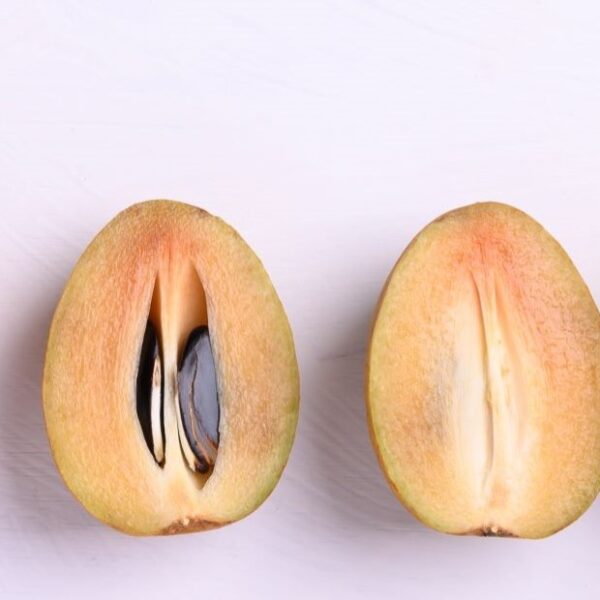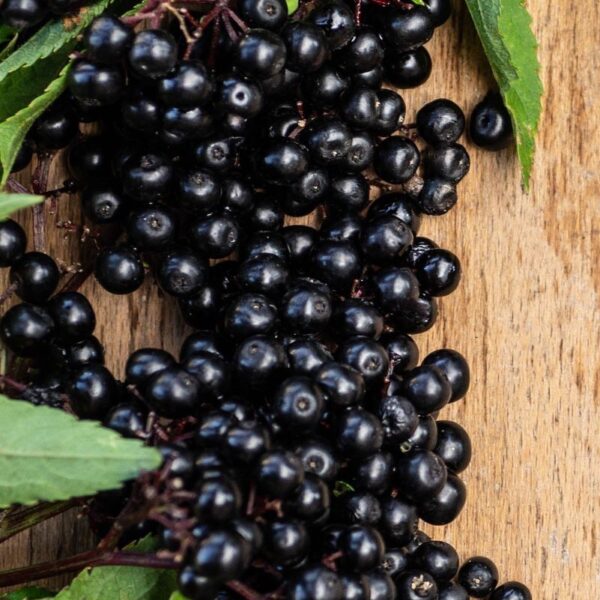Acetic acid, also known as ethanoic acid, is a ubiquitous ingredient in the global food industry, known for its multifaceted application across diverse food processing and preservation sectors. As a globally used food additive, acetic acid is an integral part of the vinegar traditionally used in food preservation. It is an acidulant that gives a characteristic flavor profile to food and prevents microbial contamination of food products.
This article offers a comprehensive understanding of acetic acid, its production, usage, properties, and the safety and regulatory aspects associated with its application in food products.
What is Acetic Acid?
Acetic acid (CH3CO2H), known as ethanoic acid, is a colorless liquid organic compound with a distinctive sour taste and pungent smell. A methyl group is attached to a carboxyl functional group in acetic acid. It is a crucial component of vinegar, contributing to its tart flavor, and is classified as a weak carboxylic acid. Despite its “weak acid” status, acetic acid is a vital ingredient in various food and non-food applications due to its distinctive properties.
Source: Wikipedia
How is Acetic Acid Produced?
Acetic acid is predominantly produced through two key industrial processes: bacterial fermentation and synthetic methanol carbonylation.
Fermentation: Typical biological processes are based on the ability of acetic acid bacteria to oxidize ethanol to acetic acid. The fermentation process is divided into two steps: the treatment with yeast followed by acetic acid bacteria. Acetobacter and Gluconacetobacter are the most used species. Acetobacter pasteurianus is traditionally used for commercial production of vinegar with a concentration not exceeding 6% (v/v), whereas Gluconacetobacter europaeus is utilized to produce high-concentration vinegar (10% v/v) [1]. Multiple surface fermentation processes named the Orleans, the Boerhaave, the generator, and the Schiitzenbach or submerged process produce acetic acid. [2].
Synthetic Production: Acetic acid is also produced synthetically. Among the chemical manufacturing processes, the key processes are the Cavita process (carbonylation of methanol), aldehyde oxidation, and ethylene oxidation [1].
Use and Application in the Food Industry
Acetic acid has been employed in the food industry for centuries, primarily as a key ingredient in vinegar. Its roles are diverse, including its use as an acidulant, flavor enhancer, and preservative. Here’s a breakdown of its functions:
| Function | Applications |
| Acidulant | As an acidulant, acetic acid helps maintain and adjust food products’ pH, ensuring optimal conditions for taste, texture, and microbial stability. |
| Flavoring Agent | Acetic acid acts as a flavoring agent by imparting a distinctive sour or tangy taste to foods and beverages, enhancing their palatability. |
| Preservative (Antimicrobial Agent) | Due to its antimicrobial properties, acetic acid acts as a preservative, inhibiting the growth of harmful bacteria, yeasts, and molds, thereby prolonging the shelf-life of food products. |
| Flavor Enhancer | As a flavor enhancer, acetic acid boosts the existing flavors in food items, improving their sensory appeal. |
| Raising Agent | Acetic acid can act as a raising agent in the baking industry. It reacts with baking soda to produce carbon dioxide gas, resulting in a leavening effect that gives baked goods their fluffy and light texture. |
| Edible Food Coating Agent | When used as an edible food coating agent, acetic acid helps to preserve the freshness and extend the shelf life of fruits and vegetables by creating a protective layer. |
Product Examples
Aside from its prominent role in vinegar production, acetic acid’s use extends to the baking, dairy, confectionery, meat processing, and beverage industries. Here are some examples of products that include acetic acid:
| Category | Examples | Role |
| Convenience Foods | Sauces & Ketchups, Vinaigrettes & Marinades, Jams & Jellies, Sauces, Pickles, Mayonnaise, Canned Foods | Acidulant, Preservative, Flavor enhancer |
| Confectionery | Candies, Gummies, Soft chews, Frozen desserts | Acidulant, pH regulator, Flavor enhancer |
| Bakery | Cake, Bread | Preservative |
| Beverages | Carbonated beverages, Acidified beverages, Fruit juices, Marmalades, Carbonated water | Acidulant, Flavor enhancer, Effervescent |
Properties of Acetic Acid
| Molar Mass | 60.052 g·mol−1 |
| Melting Point | 16 to 17 °C |
| Boiling Point | 118 °C |
| Density | 1.049 g/cm3 |
| Appearance | Colorless liquid |
| Solubility (25 °C) | 1 g/ml |
| pKa | 4.756 |
| pH (1.0 M) | 2.37 |
| Vapor Pressure (20 °C) | 11.6 mmHg |
| Viscosity | 1.056 mPas |
| Refractive Index | 1.3720 |
Typical Formulations
Tomato Ketchup
Here’s a formulation table for tomato ketchup made using vinegar acid [3].
| Ingredient | Amount |
| Tomato pulp | 1 kg |
| Sugar | 70 gm |
| Salt | 10 gm |
| Chopped onion | 1.5 gm |
| Chopped garlic | 1.5 gm |
| Red chili powder | 0.5 gm |
| Cumin, Cardamom | 0.40 gm each |
| Clove (headless) | 1.5 gm |
| Cinnamon | 1.5 gm |
| Vinegar (5 % acetic acid) | 10 ml |
Here’s a formulation table for Tomato ketchup made using acetic acid [4].
| Ingredient | Composition (wt) % |
| Tomato Paste | 32 |
| Granulated Sugar | 20 |
| Salt | 2 |
| Acetic acid 12% | 9 |
| Mixture “Chilean” | 0.1 |
| Natural Yeast Extract | 0.5 |
| Water | Rest |
Bread
The following formulation indicates the recipe for bread using acetic acid as an additive. Acetic acid was used in bread formulation to improve the shelf-life of bread, gas formation and retention, and bread-making properties [5].
| Ingredient | % Composition (wt) |
| Wheat Flour | 200 |
| Compressed Yeast | 5 |
| Sugar | 4 |
| Salt | 0.3 |
| Acetic Acid | 0.1-0.4 |
| CMC | 0.5-2.0 |
| Water | Obtain 500 BU |
Acetic Acid Formulation Considerations
Variants
Acetic acid is used in food preservation in two forms, as 5 to 10 % vinegar and as 25 to 80 % aqueous solutions of synthetic acetic acid. The 5 to 10 % vinegar is obtained either by blending acetic acid derived from fermentation and synthetic acetic acid or by fermentation alone.
Vinegar can be of multiple types, including wine, balsamic, cider, etc.
Glacial Acetic Acid
Undiluted acetic acid is sometimes referred to as glacial acetic acid. It is also sometimes called anhydrous acetic acid because it contains a meager amount of water than regular acetic acid (less than 1% by volume). Glacial means that it solidifies into crystals at around (16.7°C).
Ethanoic Acid
A diluted acetic acid solution is vinegar, ethanoic acid, or ethylic acid. This acid is classified as a weak acid.
Synthetic vs. Fermentatively Produced Acetic Acid
Synthetic vinegar can be distinguished from fermentatively produced acetic acid with the following characteristics [6].
- Synthetic acetic acid does not contain the volatiles typical for the raw materials used to produce vinegar. The addition of synthetic acid into authentic vinegar will decrease the normal levels of accompanying natural substances present in the substrate. The usual markers are 1-propanol, 2-methyl-1-butanol and 3-methyl1-butanol, ethyl propionate, and acetoin.
- The fermentation product comprises amino acids, D-alanine, D-aspartic acid, D-glutamic acid, etc., carried forward in the vinegar. Sufficient concentrations are expected in wine vinegar, apple vinegar, and other products produced from fruit juices or wines.
- The fermentatively produced acetic acid/vinegar has a richer profile and can be distinguished sensorially.
Salts of Acetic Acid
Sodium acetate and Potassium acetate are food additives obtained by neutralizing acetic acid. Both salts are colorless, crystalline solids that are soluble in water. Sodium acetate can be used as a food additive, a pH adjuster, a preservative, and a sequestrant. Potassium acetate is used in processed foods as a preservative and acidity regulator.
Dosage
Acetic acid glacial is a food additive that may be used in the following foods under good manufacturing practices (GMP) conditions as outlined in the Codex GSFA Preamble [7].
| Food Category Number | Food Category | Max Level |
| 01.6.6 | Whey protein cheese | GMP |
| 04.2.2.1 | Frozen vegetables (including mushrooms and fungi, roots and tubers, pulses and legumes, and aloe vera), seaweeds, and nuts and seeds | GMP |
| 04.2.2.7 | Fermented vegetable (including mushrooms and fungi, roots and tubers, pulses and legumes, and aloe vera) and seaweed products, excluding fermented soybean products of food categories 06.8.6, 06.8.7, 12.9.1, 12.9.2.1 and 12.9.2.3 | GMP |
| 10.2.1 | Liquid egg products | GMP |
| 10.2.2 | Frozen egg products | GMP |
| 12.1.2 | Salt Substitutes | GMP |
| 13.2 | Complementary foods for infants and young children | 5000 mg/ kg |
| 14.1.5 | Coffee, coffee substitutes, tea, herbal infusions, and other hot cereal and grain beverages, excluding cocoa | GMP |
| 04.2.1.1 | Untreated fresh vegetables (including mushrooms and fungi, roots and tubers, pulses and legumes [(including soybeans)], and aloe vera), seaweeds, and nuts and seeds | GMP |
| 09.2.2 | Frozen battered fish, fish filets, and fish products, including mollusks, crustaceans, and echinoderms | GMP |
| 09.2.3 | Frozen minced and creamed fish products, including mollusks, crustaceans, and echinoderms | GMP |
| 09.2.4 | Cooked and/or fried fish and fish products, including mollusks, crustaceans, and echinoderms | GMP |
| 09.2.5 | Smoked, dried, fermented, and/or salted fish and fish products, including mollusks, crustaceans, and echinoderms | GMP |
The maximum usage level for the following food categories has been prescribed by the US FDA [8].
| Category | Maximum Usage Level (%) |
| Baked Goods | 0.25 |
| Cheese & Dairy Analogues | 0.8 |
| Chewing Gum | 0.5 |
| Condiments & Relishes | 9.0 |
| Fats & Oils | 0.5 |
| Gravies & Sauces | 3.0 |
| Meat Products | 0.6 |
| All other food categories | 0.15 |
Effect on Properties of Food Products
Acidulants are added to food products to control the pH and give the food a tart or sour taste. They also act as preservatives, as they inhibit the growth of microorganisms.
| Antimicrobial Properties | Preservation: The preservative ability of acetic acid has been attributed to a lowering of the pH below that is needed for optimal growth. In addition, acetic acid is an excellent antimicrobial additive with bactericidal and fungicidal properties. pH lowering: Acetic acid solution contains high concentrations of protons, H+, and anions. They potentially affect all microbial cells, individually and in combination. Antibacterial Properties: Acetic acid covers a wide range of spectrum with Gram-positive as well as Gram-negative bacteria. Acetic acid at concentrations as low as 0.166% has good activity against strains of P. aeruginosa, whereas 0.312% inhibits A. baumannii [9]. |
| Shelf life | Acetic acid can have applications as an alternative sanitizer to chemical decontamination and improve the shelf life of food products. Spraying the surface of a beef sample with 2% acetic acid, fresh silver carp fish with 1 % acetic acid, and coating broccoli with 2 % acetic acid prolonged the shelf life and increased microbial safety. The sensory properties also were comparatively less altered compared with the control. |
| Sensory Properties | Sensory Characteristics: Acetic acid has a distinct sour, astringent flavor and pungent aroma associated with vinegar. Perception: It is an organic acid and tastes more sour than mineral acid at the same pH. The perception of a sour taste is influenced not only by the activity of the proton but also by the quality and character of the anion. Flavor Enhancement: Acetic acid improves flavor by adding or enhancing the sour taste of food products. |
| Texture | Acetic acid acts as an acidifier/coagulant in milk based/high-protein systems. The protein curdles and forms a lump as the pH is lowered to its isoelectric pH. |
Safety & Regulatory Considerations
Despite its wide application, the use of acetic acid in food production is regulated by international safety standards.
| FDA Information | Acetic acid is considered “food-grade” if it complies with the specifications in Food Chemicals Codex. The FDA approves using acetic acid as a curing agent, pickling agent, flavoring agent, adjuvant, pH control agent, solvent, and vehicle [10]. |
| EU Information | Acetic acid (E 260) is authorised in the EU as a food additive to Regulation (EC) No 1333/2008, belonging to group I additives. Its use is permitted in several food categories at quantum satis [11]. |
Safety of Acetic Acid
In concentrations above 30%, acetic acid will attack the skin. Because it is lipophilic, acetic acid has a more powerful denaturing effect than mineral acids with the same hydrogen ion concentration [2]. Exposure to low levels of acetic acid in the environment as part of a regular diet and from the correct use of household products would not be expected to cause adverse health effects.
Labeling Information
Acetic acid is the main component of vinegar, which contains 4 to 18% acetic acid. It is used as a food preservative and additive (E260).
As per the FDA, the product made by diluting acetic acid cannot be considered vinegar. Acetic acid should not, however, be used under conditions that result in consumer deception. For example, substituting dilute acetic acid for vinegar in pickled foods [12].
When used as an ingredient in food, it should be declared by its name, “acetic acid” or “diluted acetic acid.”
Identification Numbers
| CAS Number | 64-19-7 |
| EC Number | 200-580-7 |
| E No. (Food Additive) | E 260 |
| INS No. (Food Additive) | INS 260 |
| JECFA Number | 81 |
Fun Facts About Acetic Acid
- The pickling of foods in vinegar or vinegar-containing solutions ranks among the oldest preservation methods. Vinegar made from palm wine was known in the East as long ago as 5000 BC. It continues to occupy a firm place in food preservation even today.
- The name “acetic acid” derives from the Latin word for vinegar, “acetum,” which is related to the word “acid” itself.
- A famous physician named Hippocrates II (c. 420 BC) used acetic acid to clean wounds.
- There are reports that thieves used vinegar during the great plagues of Europe to avoid contracting infection when stealing valuables from the dead bodies of plague victims.
Additional Resources
References
| [1] | “https://www.intechopen.com/chapters/72179”. |
| [2] | “https://link.springer.com/chapter/10.1007/978-3-642-59202-7_17”. |
| [3] | “http://ecoursesonline.iasri.res.in/mod/resource/view.php?id=5848”. |
| [4] | “https://patents.google.com/patent/RU2457695C1/en”. |
| [5] | “https://www.researchgate.net/publication/229623833_Effect_of_acetic_acid_and_CMC_on_rheological_and_baking_properties_of_flour”. |
| [6] | “https://www.vup.sk/resources/bulletin/jfnr-2012-3-p123-131-gregrova.pdf”. |
| [7] | “https://www.fao.org/gsfaonline/additives/details.html?id=170”. |
| [8] | “https://www.accessdata.fda.gov/scripts/cdrh/cfdocs/cfcfr/CFRSearch.cfm?fr=184.1005”. |
| [9] | “https://www.sciencedirect.com/science/article/abs/pii/S0195670113001849#:~:text=Acetic%20acid%20has%20been%20shown,organisms%20such%20as%20Pseudomonas%20aeruginosa.”. |
| [10] | “https://www.accessdata.fda.gov/scripts/cdrh/cfdocs/cfcfr/CFRSearch.cfm?fr=184.1005”. |
| [11] | “https://efsa.onlinelibrary.wiley.com/doi/full/10.2903/j.efsa.2021.6615”. |
| [12] | “https://www.fda.gov/regulatory-information/search-fda-guidance-documents/cpg-sec-562100-acetic-acid-use-foods-labeling-foods-which-used”. |
| [13] | “https://www.sciencedirect.com/science/article/pii/B9780123849472000040”. |
| [14] | “https://avmj.journals.ekb.eg/article_176680.html”. |










